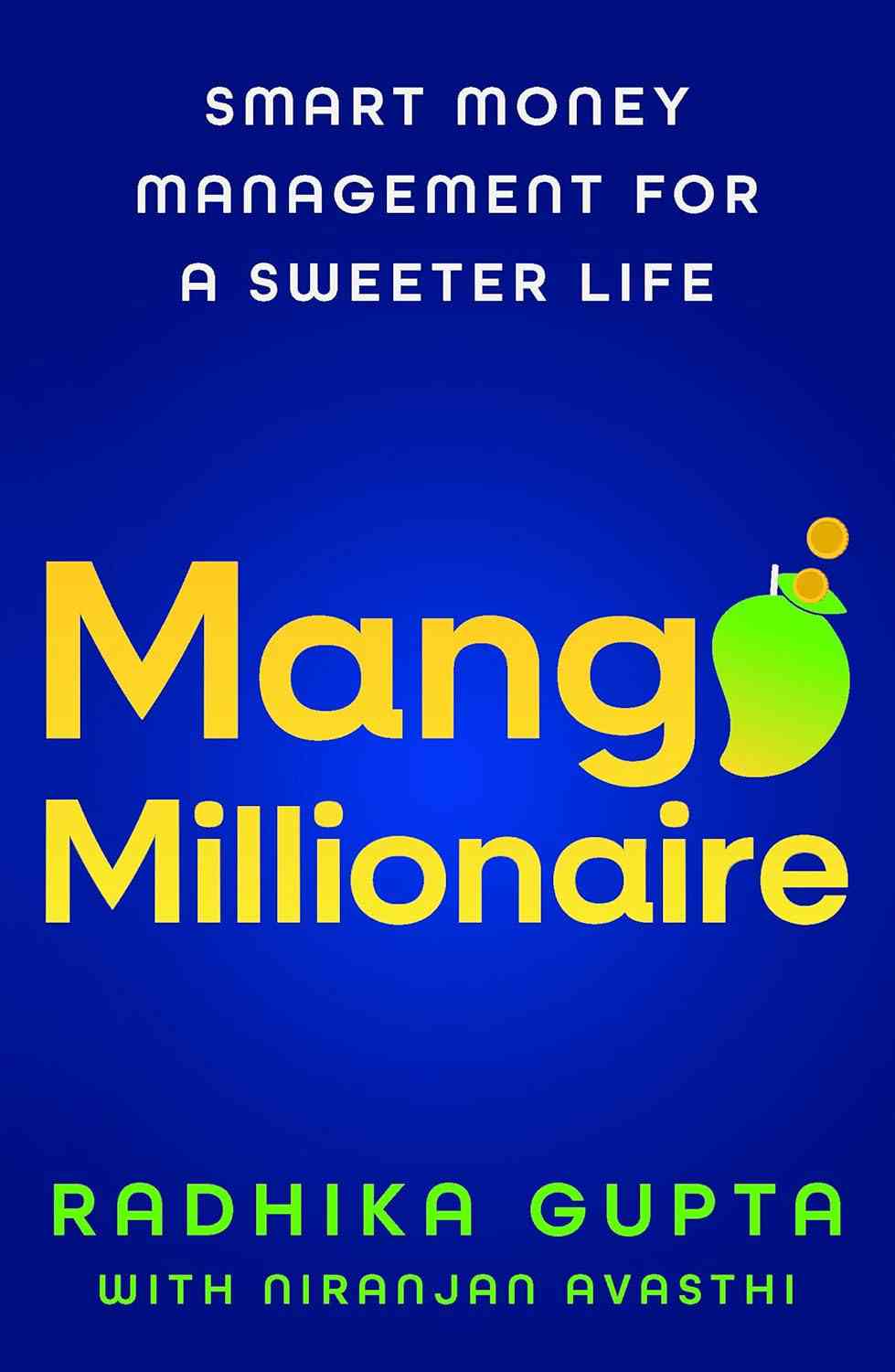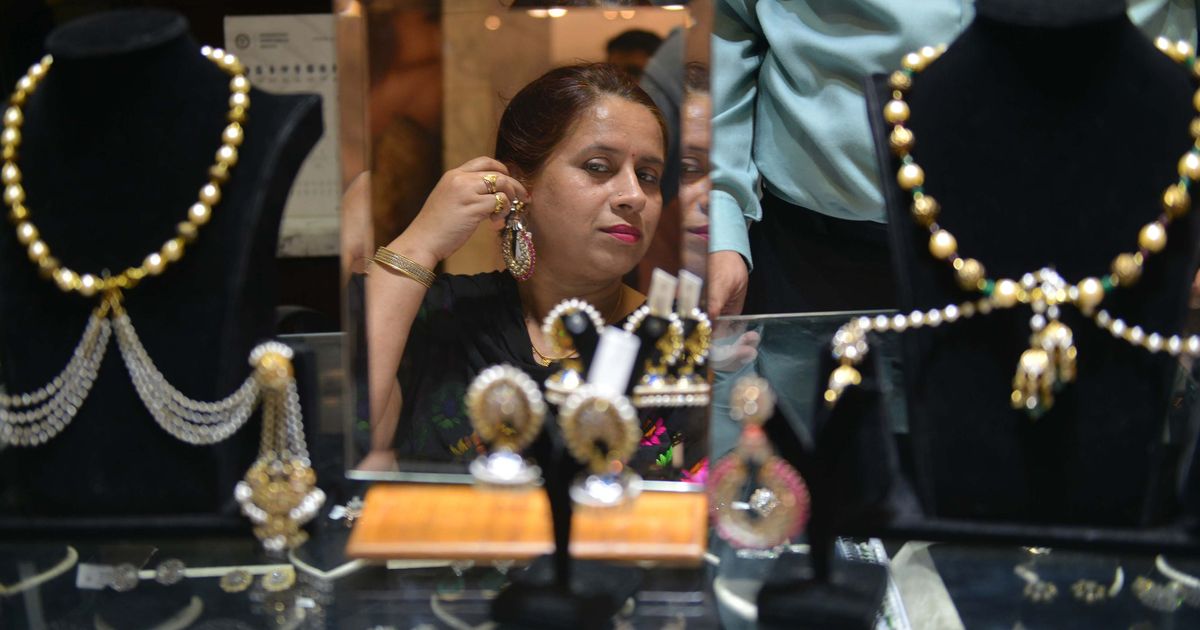On my wedding day, I wore a beautiful Rani Haar, a kind of long, elaborate necklace that is often donned by brides in India. Beyond being embellished with gold, precious stones and pearls, it was meant to symbolise the years of my parents’ hard work and their life’s savings. Running my hands over its intricate patterns, I could feel the love which had been poured into it. Even before I was born, my parents used to purchase small amounts of gold as security, and when they had a daughter, they doubled down on their purchases. They’d wait for any occasion or any other excuse to buy gold – my birthdays, Diwali, and whenever gold prices fell.
I often questioned why. In my teenage years, my mother would often say, “Beti ki shaadi ke liye 10 tola jama karna hai”, which meant that she wanted to gift me at least ten tolas of gold on my wedding day. Most Indian families have a figure like that in their mind for the amount of gold they want to gift to their daughters or daughters-in-law. A tola is a traditional Indian measure of weight for measuring precious items such as gold and is still widely used in that context. One tola of gold is equivalent to 11.66 grams, but is usually rounded off to 10 grams in India.
When I eventually started working in financial services, I remember asking my parents, “Why gold? Wouldn’t mutual funds or real estate have been more sensible investments all these years?”
But mother would just smile and say, “This is more than money, Radhika. One day, you’ll understand.”
At the time, I didn’t get it. But fast forward to my own wedding, and it all suddenly made sense. Prices of gold had risen considerably since my first birthday. But thanks to the prudence of my parents, they had accumulated enough for my wedding jewellery through gold like an SIP, well before the term became as well-known.
That’s when I realised gold wasn’t just meant to provide financial security – it also inspired a sense of emotional security, which explains its immense popularity.
When buying gold, my father would often say “bhaav badh jayega”, meaning the price would eventually increase over time. And boy, was he right! In 1983, the price of 10 g of 24 karat gold was Rs 1,800. Now it is nearly Rs 90,000, as of March 2025. Rising by over 11.5 per cent CAGR during this period. Hence, gold is a good asset to add to your investment portfolio – but in the right proportion.
Gold cushions your investments through major economic downturns. Since it is priced in US dollars, when the Indian rupee weakens, gold becomes more valuable. Conversely, if the rupee strengthens, gold prices in the country fall even if global gold prices stay the same. Whenever the economy goes haywire – whether due to a stock market crash, a recession, or even a global crisis – gold generally retains its value. Lastly, gold is a rare commodity. Its scarcity imbues it with serious power, making it way less likely to lose value over longer-term periods like ten to 15 years, as compared to other assets.
On an individual level, this last bit is what prompts people to buy gold – it is treated as an umbrella of safety for rainy days. In many Bollywood movies, wives are shown to lease or sell their most beloved pieces of jewellery – even their precious mangalsutras – to save their husbands or families from financial distress. Gold is the commodity of choice amongst Indian women – can you guess how much of this shiny metal they own? As per unofficial estimates, the total value of gold held by women in India is equivalent to about 20 per cent of India’s GDP! On the other hand, the Reserve Bank of India’s gold reserves are said to be worth more than $700+ billion. This means Indian women own more gold than the gold held by the RBI! Yeah – how’s that for girl power?
Gold has pulled off giving an impressive annual return rate of 11.5 per cent since 2000 – which is pretty solid! But there have been some bumps along the way. Some years, gold even dipped into the red or went totally flat for two to three years, offering zero returns. For example, between 2013–15, gold prices dropped consistently, from a peak of around Rs 31,0505 per 10 g in 2012 to 26,343 per 10 g by 2015. In this period, gold prices fell because the US dollar became stronger, interest rates went up and the global economy improved, making gold less appealing to investors.
So while the long-term gains look great, it hasn’t been smooth sailing all the way. And like any other investment, gold also comes with its own advantages and disadvantages. Some of these are as below.
Why gold?
Safety: It is a reliable long-term investment.
Liquidity: Easily sold at jewellers in emergency situations.
Returns: It offers an impressive 11.5 per cent average since 2000.
Collateral: It can be used as a guarantee against short-term loans.
Why not gold?
No regular income: You earn no dividends or interest on gold.
Volatility: Its value can fluctuate majorly, and these changes often go unnoticed.
Storage Costs: You need to invest in secure storage for it.
Short-term risks: There is a possibility of getting negative returns on your investment in the short term.
How should you invest in gold?
Given how gold has always been considered a symbol of wealth and security, especially in India, there is no doubt about its reliability as a hedge. While it may not always offer the highest returns, it can shield you from market volatility and inflation in the long term. Many people often ask me how they can start investing in gold. Here’s a list of the main options available:
Coins, Bars or Jewellery: This is the classic route to investing in gold. If you sell gold after two years, expect to pay 12.5 per cent LTCG tax. In case of jewellery, you’ve got to factor in the making (or breaking) charges, which can eat into your returns. You’ll also need to ensure its safe storage by paying for bank lockers, etc. Gold jewellery also acquires emotional value, and people generally grow hesitant to sell it, defeating its purpose as an investment. So if you want to invest in gold (and not just buy jewellery to wear), our advice would be to buy it through the other financial instruments below.
Gold ETFs (Exchange-Traded Funds): A gold ETF (we’ll talk about these in more detail in chapter 13) is bit a like a mutual fund in that it is traded on stock exchanges, so you can buy or sell whenever you want. All you need to have is a demat and broking account. They offer a high level of liquidity and there is no need for you to worry about bank lockers or security since everything’s digital. The returns on these are linked to the prices of gold.
Sovereign Gold Bonds (SGBs): These are issued by the Government of India and offer gold price appreciation plus a fixed 2.5 per cent annual interest. They have an eight-year maturity, but you can cash them out after five years if you need to. SGBs aren’t as easy to trade as ETFs or gold funds but they’re tax-exempt on capital gains if you hold them till maturity, although they are no longer issued. Only the ones issued earlier are can still be traded on exchange and are available for traders to purchase. Just note that the interest you earn is taxable and selling early might mean lower liquidity and a dip in value.
Digital Gold: This option lets you buy small amounts of gold online, making it convenient for those looking to invest in gold with a small budget without the hassle of safety and storage. However, lack of regulatory guardrails and transparency make it less reliable. It is also taxed like physical gold, and GST applies when you buy, making it a bit less tax-efficient than Gold ETFs or bonds.
While Indians have turned to gold as a means to guard their wealth and peace of mind for generations, it is wise to step back and weigh your options before you take the plunge. It won’t make you rich like stocks might, but its value as a safety net is indisputable, especially when the markets mimic stormy seas.
Can your portfolio have 5–10 per cent of gold? Absolutely! 50 per cent? Probably not. It is best to use gold as a complementary asset, not as the centrepiece of your investment strategy.
Radhika Gupta is the MD and CEO at Edelweiss MF
Niranjan Avasthi is Senior Vice President at Edelweiss MF.

Excerpted with permission from Mango Millionaire: Smart Money Management for a Sweeter Life, Radhika Gupta and Niranjan Avasthi, Pan Macmillan India.










